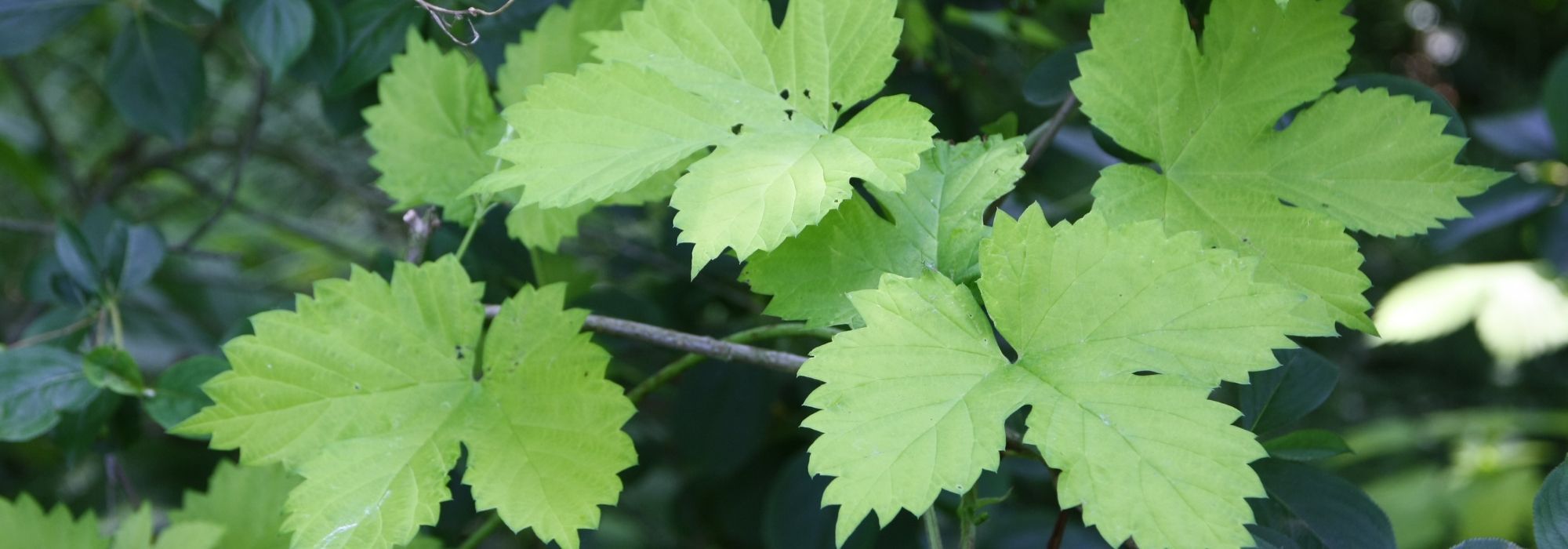
Hop, Humulus lupulus : planting, cultivation and use
Contents
Hops in a nutshell
- Perennial voluble climbing plant, hops clings to supports using its long woody climbing stems.
- Low-maintenance, easy-going, resilient and very hardy plant.
- Hops is also highly decorative with lobed foliage of a fresh green, sometimes golden in variety ‘Aureus’, and cones that persist for long periods.
- Medicinal plant long known and also widely used in the brewing industry worldwide.
- Can be trained to climb a wall, a pergola, a tree… or even used as groundcover.
A word from our expert
As a Belgian with training in fermentation, I obviously have a particular fondness for hops. But its brewing qualities are not the only interesting aspects, far from it.
Indeed, hops is an extremely voluble perennial, remarkably resistant to diseases and cold. It grows in any soil rich enough to provide nourishment for its ultra-rapid growth. Believe it or not, this climbing plant can produce stems up to 6 metres long in a single season!
Hops can cling on its own to all kinds of supports: pergolas, trellises, old walls, concrete pylons, fences, taut wires, and even… trees or bushes within a hedge. I once discovered an old car body in a wood completely covered in hops! This ability makes this charming climbing plant a preferred choice if you want to green an unsightly element in your garden quickly.
This plant is also very decorative with its lobed foliage, sometimes golden or variegated depending on variety or species, and pairs very well with other vigorous climbers such as roses or clematis. A trouble-free plant, it will be splendid in a slightly wild, natural flower garden.
Of course, hops has long been known for its therapeutic virtues. And if you’re not much into beer, you can enjoy it as a herbal tea or simply place the cones under your pillow for a restful, fragrant night’s sleep.

Description and botany
Botanical data
- Latin name Humulus lupulus
- Family Cannabaceae
- Common name Hop, Northern couleuvrée, Northern vine-plant, Native sarsaparilla, Devil's wood
- Flowering between June and September
- Height up to 6 m
- Sun exposure partial shade
- Soil type all types of rich, deep soils, even clay
- Hardiness -28°C
Hop is a perennial climbing plant of the family Cannabaceae (yes, yes, like… cannabis). The name Humulus lupulus comes from the Latin “humus” meaning “earth” because the plant runs along the ground, and from “lupulus” meaning “little wolf” because the Romans (Pliny the Elder first) thought hop sucked sap from trees. There are also two other Asian species, Humulus japonicus and Humulus yunnanensis, fairly similar to our hop but slightly less hardy. Humulus japonicus ‘Variegata’, with crinkled green and white foliage, is sometimes found at a specialised nursery.
Humulus lupulus is found throughout the Northern Hemisphere, except in the far north. Its natural habitats are varied: woods, hedgerows, riparian woodlands and megaphorbia (wet transitional wastelands made up of tall non-woody plants and grasses) but always on fresh soil.
Hop is extremely hardy (-28°C) and adapts to all soils, even clay, provided they are rich and deep. Hop prefers partial shade but can grow in full sun in the coolest regions.
This climber attaches to any support (walls, pergolas, concrete pylons, trees, …) thanks to its quadrangular, woody climbing stems that are hirsute and twist clockwise. It easily grows up to 6 metres high and at least as wide, but can be pruned easily. The plant layers very readily and can quickly become invasive. Note that, like most prolific climbers, hop can be successfully used as a groundcover.
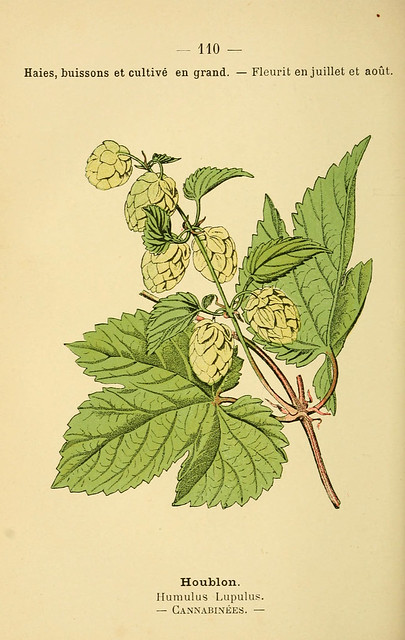
Humulus lupulus – botanical illustration
Growth does not start until April. Indeed, hop’s foliage is not evergreen and its shoots die back in winter. Leaves are deciduous, opposite and measure between 10 and 15 cm. They consist of 3 to 5 lobes, slightly reminiscent of vine leaves (hence one of its vernacular names: Northern vine-plant).
Hop is a dioecious plant, which means there are male and female plants. Male plants bear pale green flowers in panicles, while female plants produce ament-shaped flowers that develop into ovoid, pendulous cones (those used for beer and herbal teas) covered in an aromatic, powdery resin called lupulin. It is this lupulin that gives beer its bitterness and helps to preserve it. These cones are harvested then dried from September. Fruits in the form of achenes about 3 mm long are produced only by female plants. Fertilisation is by wind (anemogamous) and seed dispersal is also by wind (anemochory).
Besides its undeniable ornamental qualities, hop has been used for centuries for its therapeutic virtues and in the food industry. It was especially Hildegarde von Bingen (Saint Hildegarde!) in the twelfth century who popularised the idea of adding hop to beer to “calm the nuns of her monastery and restore their colour“. Benefits were multiple: hop helped to sterilise beer (at a time when drinking water could be deadly), flavour it and give it a pleasant bitterness, replacing the bittering agents used then such as dandelion, heather or calendula. “Real” beer was finally born!
Hop’s therapeutic virtues have also been known since the 10th century. Hop has properties that help combat sleep disorders, stress and nervous fatigue as well as lack of appetite. It also has febrifuge, vermifuge, sudorific and depurative properties, and can help regulate menopausal disorders. Medicinal hop is used as a dry extract, essential oils, powder or as an infusion of dried cones. Note that in high doses hop can become overly sedative, cause headaches and reduce libido. You have been warned…
Our favourite varieties
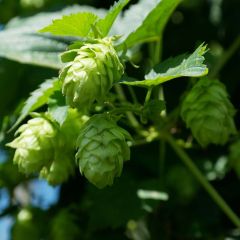
Humulus lupulus Magnum - Common Hop
- Flowering time July, August
- Height at maturity 6 m
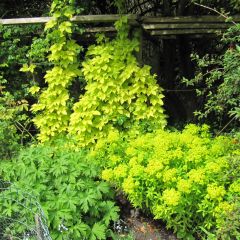
Humulus lupulus Aureus
- Flowering time September to November
- Height at maturity 5 m
Discover other Humulus - Hop
View all →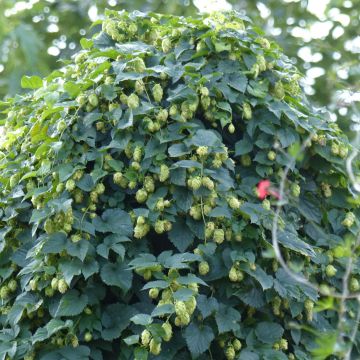
Available in 2 sizes
Available in 1 sizes
Available in 1 sizes
Available in 2 sizes
Available in 1 sizes
Available in 1 sizes
Available in 1 sizes
Available in 1 sizes
Available in 1 sizes
Available in 1 sizes
Planting hops
Where and when to plant?
Hop is planted in spring. All soil types are suitable, even clay soils, but hop needs, to grow well, rich, deep soil. The exposure that suits it best is partial shade, or even sun in the cooler regions.
How to plant?
Hop has a rhizomatous stump. Keep this in mind when planting.
To plant hops :
- Start by dipping your hop pot for a few minutes in lukewarm water to re‑moisten the soil ball
- Dig a hole about twice the volume of the soil ball.
- Loosen the soil well and add some well‑rotted manure or a little well‑rotted compost to give it a good start.
- Place the soil ball at the bottom of the hole and backfill. Take care not to bury the collar of the plant.
- Firm the soil lightly with your hands and give a good watering with a watering can to avoid pockets of air between roots and soil.
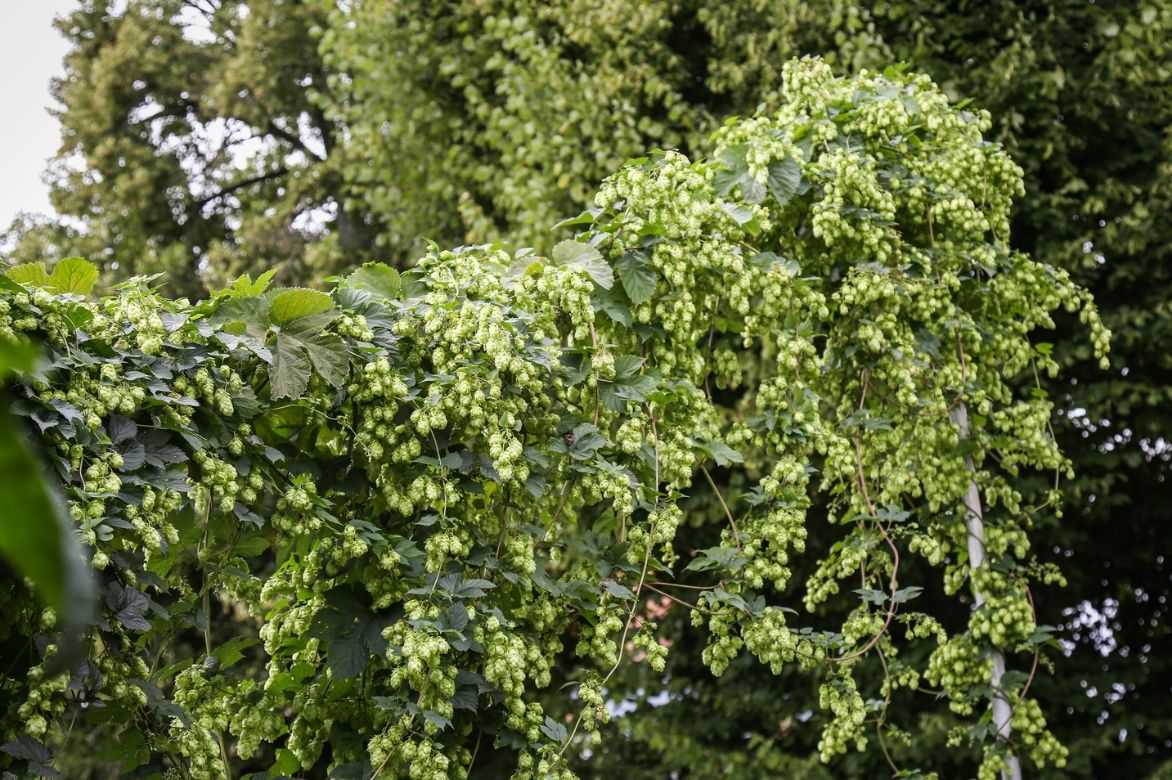
Hop quickly forms a leafy screen!
→ Also discover how to grow hops in a pot and how to train and stake hops on our advice pages
Propagating hops
By sowing
To harvest seeds, shake the female cones at the end of autumn. Sowing is possible directly in open ground in May in rich, well-worked soil. You can also sow in a seed tray in ‘special sowing’ compost for later potting on in spring.
By cutting
Take semi-ripe stems 15 cm long in August; these are young stems partially lignified. Remove leaves except for the last two at the tip of each stem to avoid drying out through evapotranspiration. Plant in a light substrate or in water. Roots will appear quickly. Once roots appear, plant your young hops plant in a pot so it can strengthen. You can then plant it out permanently in April of the following year.
By layering
Hops can be layered naturally. Simply collect a well-rooted layer and transplant it to another location of your choice in spring.
Another solution is to carry out serpentine layering. To do this, press a long stem onto the soil and undulate it like a snake, fixing the stem to the ground at intervals with U-shaped pegs. Wait one year for roots to form properly and transplant in the following spring.
→ Learn more about propagating hops in Ingrid’s tutorial
Caring for hops
Care
No care is really required.
You can pinch the young shoots of your hop plant to help it branch out in early May.
Even though the hop plant clings to its support by itself, you can also help by guiding it a little towards the support you want it to colonise.
Don’t forget to water during the first year in relatively dry periods and to mulch the base to retain moisture throughout its life.
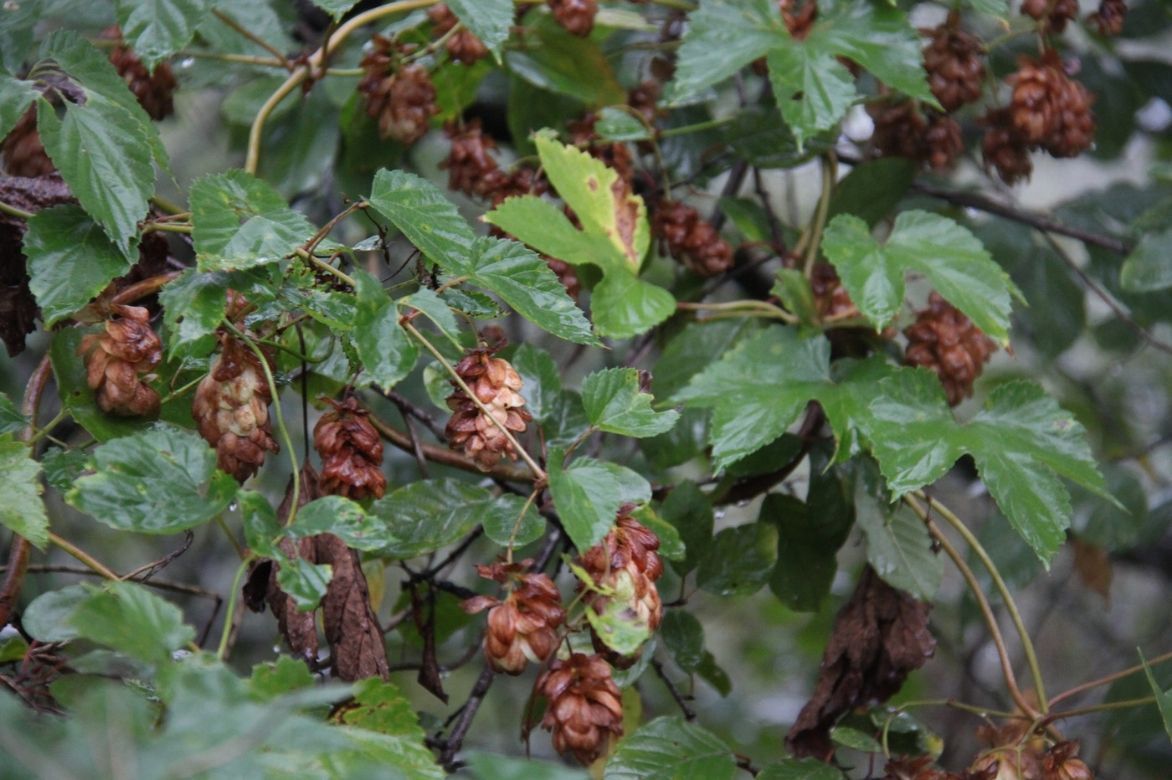
Cones brown as they age
Pests and diseases
No disease is to be reported on hops (except in industrial monoculture…).
On very (too) rich soils, you may of course experience an aphid attack. This mainly happens with use of chemical fertilisers; always favour an organic input: manure, horn meal, compost, … or even nothing at all. Soil naturally becomes richer by leaving plant debris on the surface.
→ read: “Aphids: identification and treatments”
The hop plant is host to a few moth caterpillars, without real consequences for the plant: hop pug (Eupithecia), hop pyralid, tussock and snout moths.
In the few days after planting, the hop plant is vulnerable to slug attacks. Simply protect it using a cloche. Although a glass cloche is ideal, the easiest solution is to reuse a 5-litre plastic water bottle. Cut off the bottom and remove the cap. Place this improvised “cloche” over the young plant until it grows a little past the neck. Then remove the cloche — your hop plant will be well established and no longer at risk from slugs.
Companion planting and garden uses
With other climbing plants
The golden hop works wonders paired with a very vigorous rambling rose: a Banks’ rose ‘Lutea’, for example, which can be literally covered in yellow pompom blooms for two months. Add a vigorous clematis as well: Clematis ‘Blue Pirouette’ with its large deep-blue flowers that will contrast nicely with the rose’s yellow blooms and the hop’s golden foliage. It is important to choose companions as vigorous and hardy as the hop to prevent it overwhelming its neighbours. You can then train all three plants up a sturdy support, or even up a large somewhat bare tree. Don’t forget to dress the base of the climbing plants; it will look nicer while helping maintain healthy soil moisture. Brunnera ‘Jack Frost’ will brighten early spring with a multitude of blue flowers, and later its silver-marbled foliage will also look superb. To extend flowering, Geranium phaeum will be perfect. To complete the planting, the distinctive flowering of Euphorbia waldsteinii ‘Betten’ will contrast beautifully with the blue and violet flowers of the perennials while echoing the foliage of the golden hop.
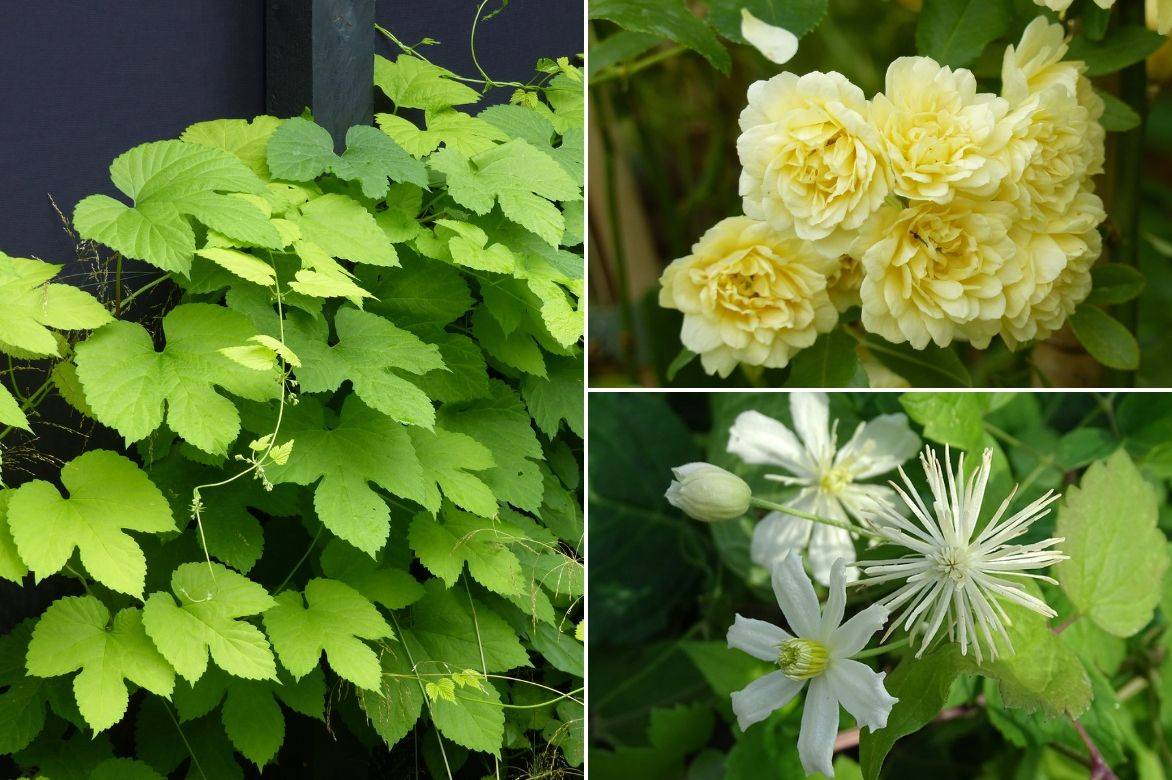
An idea for pairing: Humulus lupulus ‘Aureus’, Banks’ rose ‘Lutea’ and Clematis fargesii ‘Summersnow’
→ Discover our charming natural duo of golden hop and Clematis fargesii.
On a slightly sad-looking evergreen tree
I am thinking in particular of an old sparse boxwood, a conifer, … Sometimes a simple light thinning to open the canopy and training a pretty climber such as a hop can bring life back to trees and shrubs nearing the end of their career… Something to consider before reaching for the chainsaw and doing something irreversible.
To hide an old wall or an unsightly element in the garden
We all have in our gardens a particularly ugly built structure that, sadly, is difficult to move or remove. No matter: the solution could be to hide it with a vigorous hop. It will grow much faster than ivy or a climbing hydrangea and will perform the task wonderfully.
Did you know?
- Young hop shoots are edible and taste similar to asparagus.
- Long woody climbing stems of hops are used for rustic basketry: making baskets or small toys.
- Fresh or dried female cones are lovely to use in floral arrangements.
- More than a hundred different cultivars exist for growing brewing hops, which are trained on iron wires stretched over a wood structure.
- Cultivation of these brewing hops is mainly in Germany and the United States. However, the Czech Republic and Belgium, although cultivation there is almost negligible, produce some of the best cultivars and have recently begun cultivating organic hops.
- Hops are not added at random during beer production. They add bitterness when introduced in the early stages of the boil. When added in the final half hour, they impart their distinctive flavour. It is, among other factors (malt also plays a major role), the timing of the addition and the different hops used that give beer its flavour. That is why so many different beers exist worldwide. Among the many hop cultivars, there are bitter hops (often sold as pellets) and aromatic hops (often as dried cones).
Recipes
Infusion of hop cones
You can steep 10 g of dried hop cones for a few minutes in very hot water. This infusion can be taken just before bedtime to help combat insomnia. If hop bitterness is too strong, you can add a spoonful of honey to soften the taste.
Useful resources
- Discover our range of hops
- Learn more about hop propagation in Ingrid’s tutorial!
- Discover our guides: How to grow hops?, Hops — what is it used for?, Growing hops in a pot, Training and staking hops
- Browse our tutorial: how to dry and store hops?
- Olivier tells you everything about choosing hop varieties for brewing your beer!
Frequently asked questions
-
My hop plant seems dead as winter ends. Is this normal?
Yes, that's perfectly normal. Hop stems tend to dry out during winter and growth of young shoots does not begin until late spring, around April.
- Subscribe!
- Contents
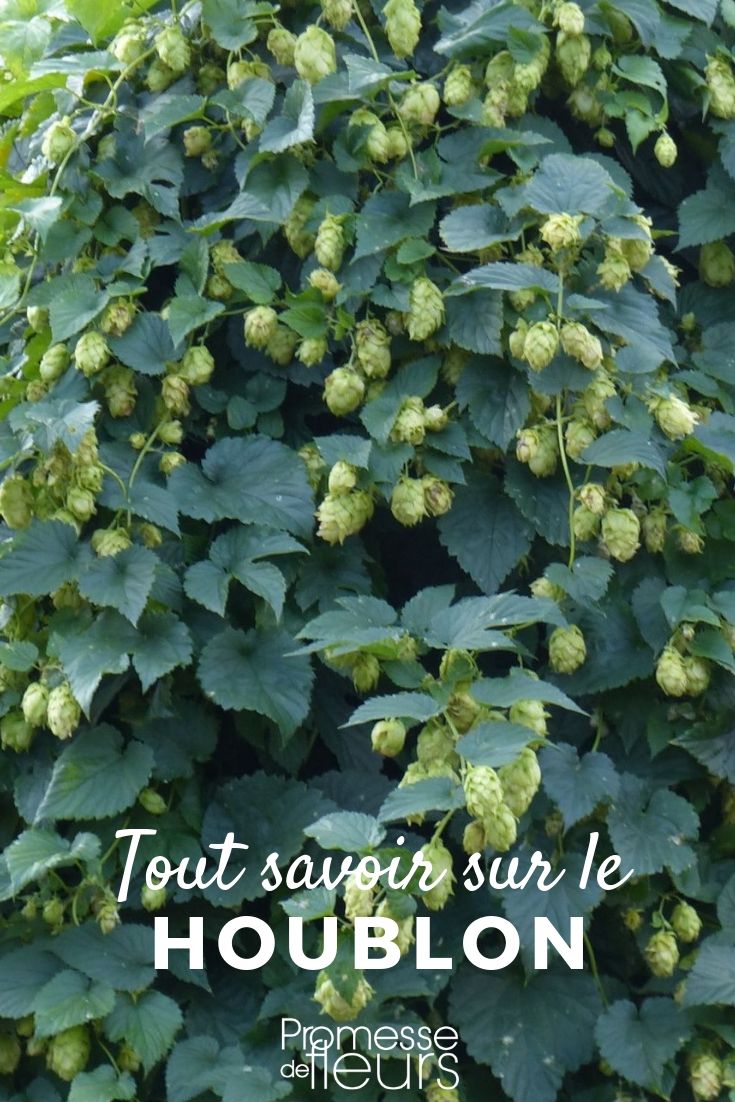































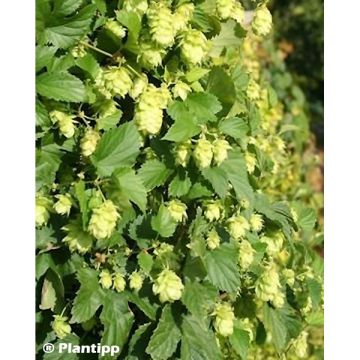


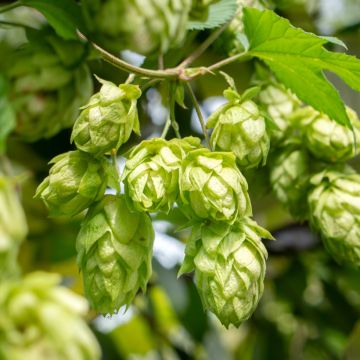
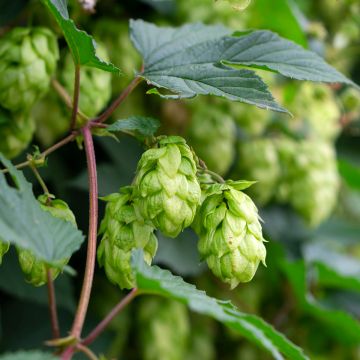
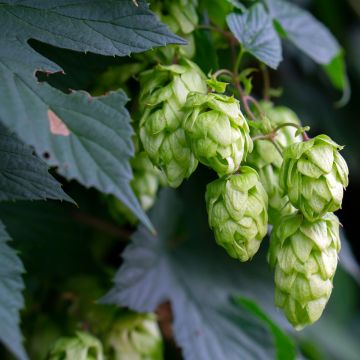
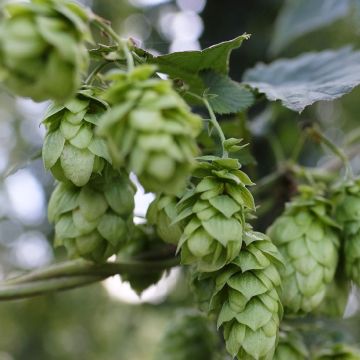
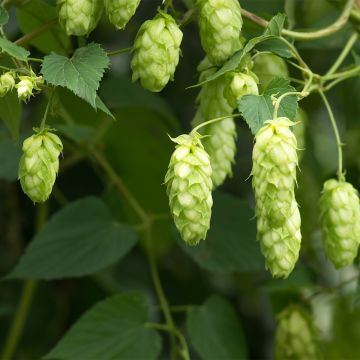
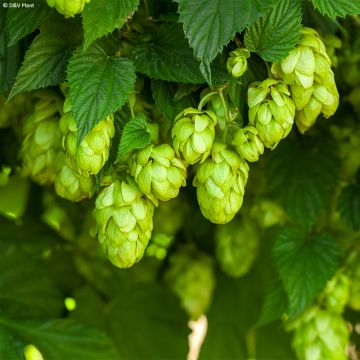
Comments